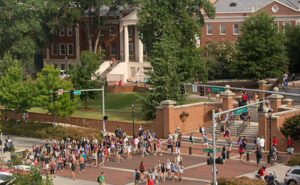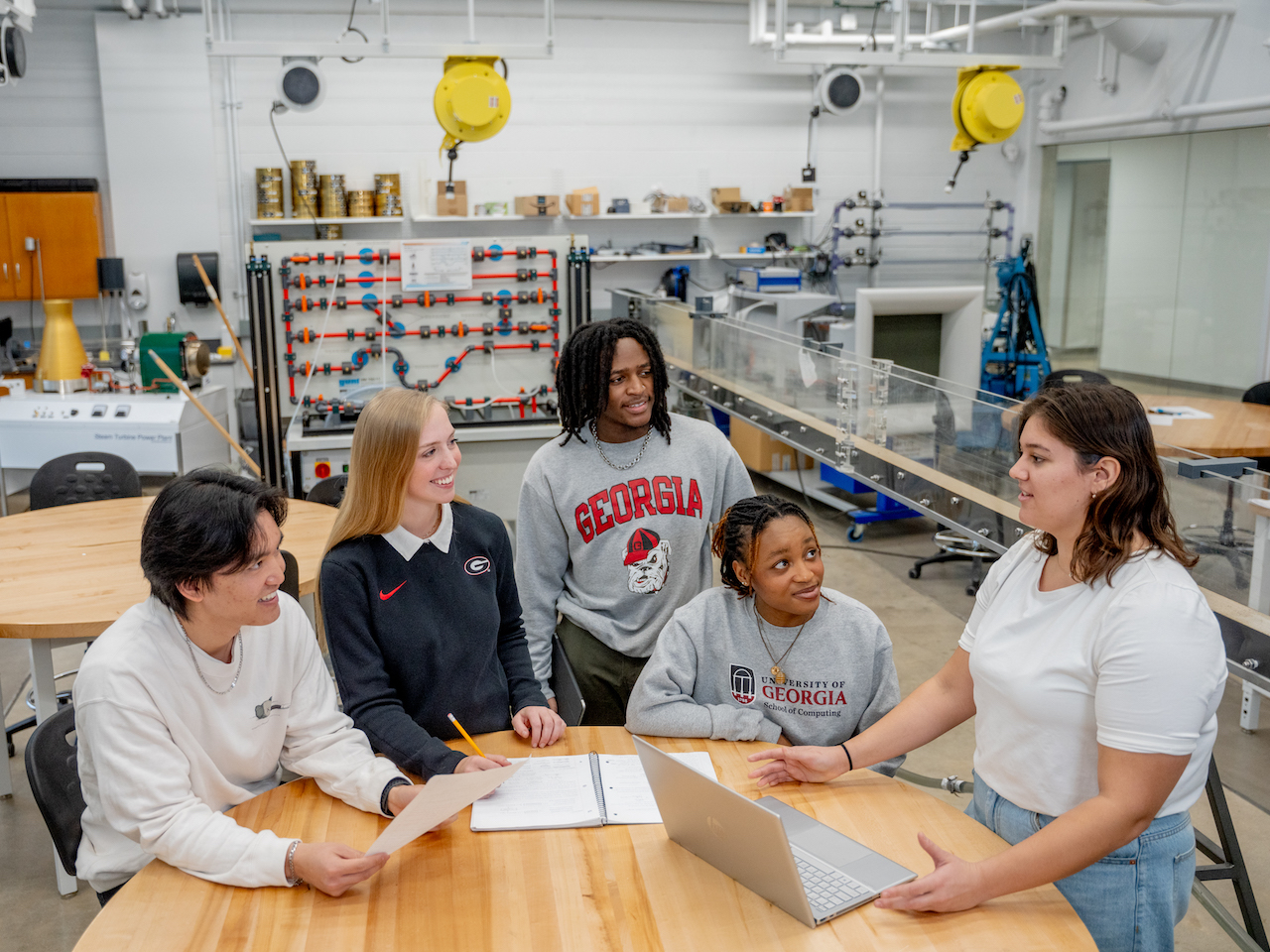 Instructor challenges class to brainstorm solutions for students with visual impairments
Instructor challenges class to brainstorm solutions for students with visual impairments
Getting from point A to point B on the University of Georgia’s sprawling campus can be a challenge under the best of circumstances. Imagine the additional hurdles people with disabilities face as they try to make their way around the campus’ 762 acres and 465 buildings.
As part of a computer systems engineering course this semester in the College of Engineering, instructor Ben Manning challenged his students to design a campus navigation system to assist students with visual impairments. Collaborating with the UGA Disability Resource Center, each four-person team mimicked the structure of a small start-up company with students serving as business analysts, systems architects, user-interface designers and project managers. The teams were tasked with developing a prototype for an initial round of investor funding.
“It’s vital for engineering students to understand that their solutions are often driven by the needs of business and guided by user requirements,” said Manning. “I wanted to create a project that would bring students together and create awareness about inclusion while also allowing them to conceptualize an engineering solution to a real problem that finds them simulating tasks that they need exposure to while they are still in school.”
The student teams used the directional kiosks often used in shopping mall and airports as a starting point, then expanded the scope of their designs to address the needs of the visually impaired. For example, some teams proposed GPS-connected mobile apps with voice capability. One group suggested a haptic interface – a system which applies forces, vibrations or motions to the user. In this case, the system could cause a user’s shoes to vibrate to alert them to follow a particular path. One team even designed special kiosks with automatic dog treat dispensers for guide dogs.
Erin Benson, senior assistant director of disability services in the Disability Resource Center, worked with the teams to help them better understand the needs of students with visual impairments on campus.
“The physical campus is an integral part of the University experience,” she said. “We want all students, faculty, staff and visitors to be able to fully participate and engage with their environment. Individuals with visual impairments have to navigate a unique landscape on campus which includes traffic intersections with cars and buses, as well as a diverse landscape with stairs, bridges and buildings connected by various routes.”
Manning hopes to build an on-going collaborative relationship between the College of Engineering and the Disabilities Resource Center. He believes the customized solutions often required by students with disabilities is a perfect challenge for engineering students to tackle.
“Instructionally, I tend to design many of my classes with opportunities for students to replicate roles and experiences they’ll likely see in jobs after they graduate,” said Manning. “As future practicing engineers it’s important for them to experience all aspects of a system, not just the technical aspects that surround a specific area, design or solution.”
Of the 13 teams in the class, Manning said about half have expressed an interest in continuing their project through UGA’s Center for Undergraduate Research Opportunities (CURO). The program offers undergraduates the opportunity to do one-on-one research with faculty mentors.
“We live in an exciting time,” said Benson. “Thanks to ever-evolving technological advances and creative minds, we have opportunities to identify innovative solutions and to remove an array of obstacles that hinder individuals with visual impairments, creating an inclusive environment for all.”


